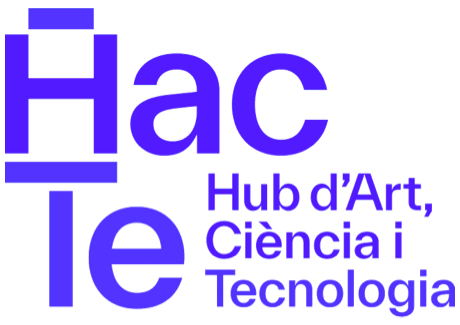'Second Summit on New Media Art Archiving'
← 'Second Summit on New Media Art Archiving'
June 10thLong paper – The future of art museums in the digital age: VR for archiving purpose
- Abstract: Art museums are committed to expanding the digital display of their archives by using digital technology, diversifying the types and forms of their exhibitions, increasing archival formats, and promoting repeated visits anytime, anywhere. Many museums have also begun to use virtual reality (VR) display platforms such as Google Arts & Culture, which is intended primarily for viewing art in high-resolution images and video. More than 2,000 cultural institutions, including the Guggenheim Museum in New York and Orsay Museum in Paris, use this platform to provide virtual content. It is reasonable to infer from this that the rising popularity of VR technology and of online VR platforms targeting the art sector should also have potential applications in archival work. For example, the National Museum of Modern and Contemporary Art (MMCA) in Seoul already utilizes VR technology for documenting its physical exhibitions. However, despite the growing application of this technology, few studies have comprehensively studied the forms and content of the artworks archived in traditional museums (i.e., paintings and photographs) and by comparison to electronic art archives that utilize modern VR technology. By analyzing the advantages and disadvantages of virtual reality technology, this study aims to explore the potential of such applications in the context of digital archiving. In this paper, we take several major modern and/or contemporary art museums as examples for analysis and comparison. We show that virtual reality technology has brought advantages to the archival work of contemporary art museums, such as enhanced immersion and expanded diversity of exhibits. Further, it appears likely that the increasing commodification of VR technology will further possibilities in the future.
- Biography:
 Ze Gao is an interdisciplinary artist, curator, and media art researcher. Working in the intersection of art and technology. He studied Multidisciplinary Fine Arts at the Maryland Institute College of Art and received his M.F.A from The School of Visual Arts in New York. With a background in both image science and art, his research across different practices and interests, including artificial intelligence, human-computer interaction, museum study, and extended reality. He has several publications, mainly in the areas of New Media Art and Chinese Classical, he currently living in Hong Kong and Guangzhou. He has been invited as a visiting scholar to the Department of Philosophy, Sun Yat-sen University (Guangzhou, China,2020), Confucius Institute, University of Bonn,(Bonn, Germany, 2019), and School of Art and Design, Yunnan University,(Kunming, China,2019), residence artists at Nanchuan Lixiang Lake Art residence project, Sichuan Academy of Fine Arts,(Chongqing, China,2020), Glasgow School of Art,(Glasgow, Scotland, UK, 2014).
Ze Gao is an interdisciplinary artist, curator, and media art researcher. Working in the intersection of art and technology. He studied Multidisciplinary Fine Arts at the Maryland Institute College of Art and received his M.F.A from The School of Visual Arts in New York. With a background in both image science and art, his research across different practices and interests, including artificial intelligence, human-computer interaction, museum study, and extended reality. He has several publications, mainly in the areas of New Media Art and Chinese Classical, he currently living in Hong Kong and Guangzhou. He has been invited as a visiting scholar to the Department of Philosophy, Sun Yat-sen University (Guangzhou, China,2020), Confucius Institute, University of Bonn,(Bonn, Germany, 2019), and School of Art and Design, Yunnan University,(Kunming, China,2019), residence artists at Nanchuan Lixiang Lake Art residence project, Sichuan Academy of Fine Arts,(Chongqing, China,2020), Glasgow School of Art,(Glasgow, Scotland, UK, 2014). Dr. Varvara Guljajeva is an artist and researcher holding the position of Assistant Professor in Computational Media and Arts at the Hong Kong University of Science and Technology (Guangzhou). Previously, she held positions at the Estonian Academy of Arts and Elisava Design School in Barcelona. Varvara was invited as a visiting researcher to XRL, Hong Kong City University, IAMAS (Ogaki, Japan), LJMU (Liverpool, UK), Interface Cultures in the Linz University of Art, and Design, Blekinge Institute of Technology (Karlshamn, Sweden). Her PhD thesis “From Interaction to Post-Participation: The Disappearing Role of the Active Participant” was selected as the highest-ranking abstracts by Leonardo Labs in 2020.
Dr. Varvara Guljajeva is an artist and researcher holding the position of Assistant Professor in Computational Media and Arts at the Hong Kong University of Science and Technology (Guangzhou). Previously, she held positions at the Estonian Academy of Arts and Elisava Design School in Barcelona. Varvara was invited as a visiting researcher to XRL, Hong Kong City University, IAMAS (Ogaki, Japan), LJMU (Liverpool, UK), Interface Cultures in the Linz University of Art, and Design, Blekinge Institute of Technology (Karlshamn, Sweden). Her PhD thesis “From Interaction to Post-Participation: The Disappearing Role of the Active Participant” was selected as the highest-ranking abstracts by Leonardo Labs in 2020.
As an artist, she works together with Mar Canet forming an artist duo Varvara & Mar. Their works were shown at MAD in New York, FACT in Liverpool, Santa Monica in Barcelona, Barbican in London, Ars Electronica in Linz, ZKM in Karlsruhe, and more. www.var-mar.info
Venue
- MACBA - Convent dels Àngels
Plaça dels Àngels, 5, Barcelona
⟵ Return to 'Second Summit on New Media Art Archiving'





